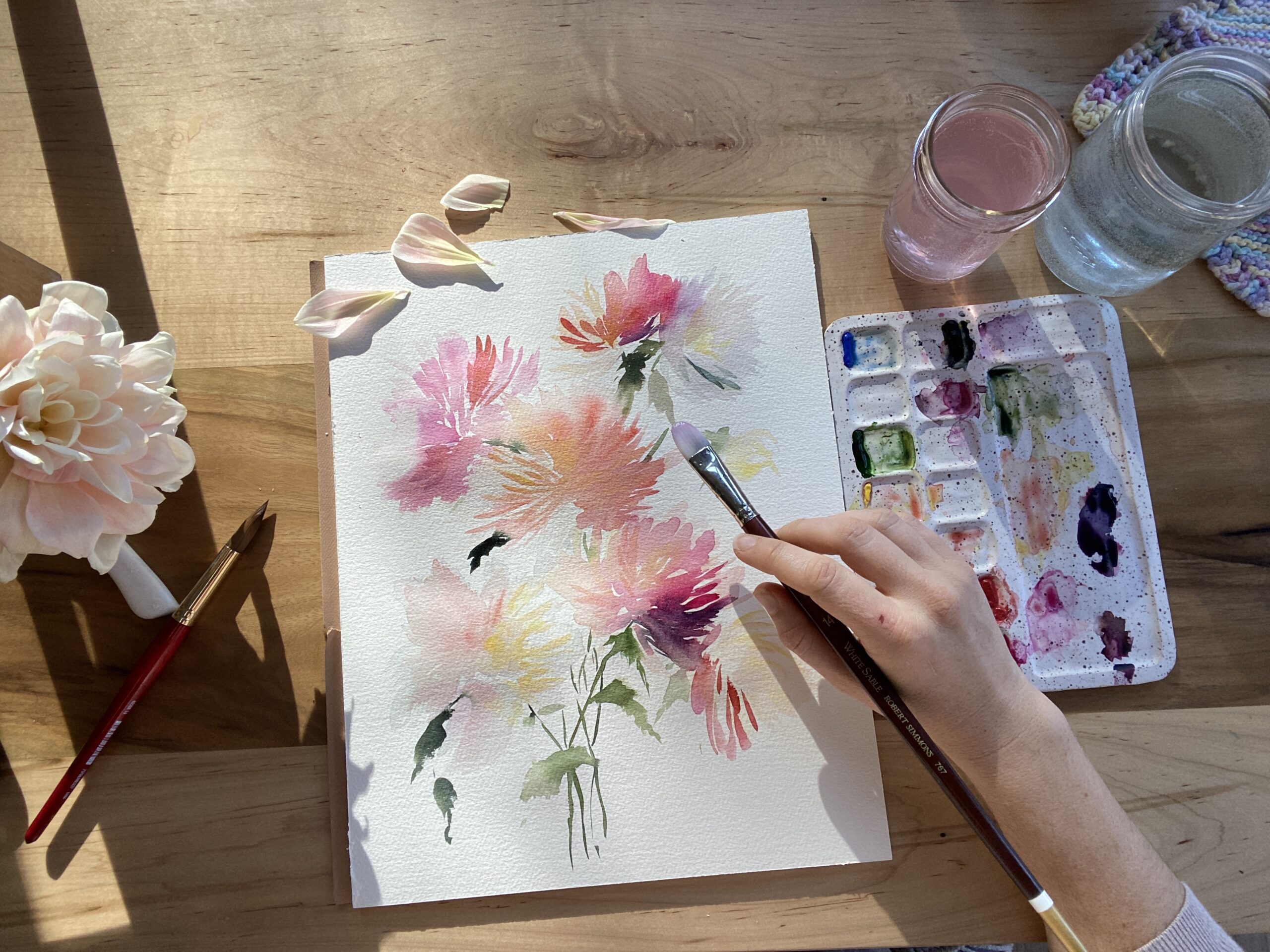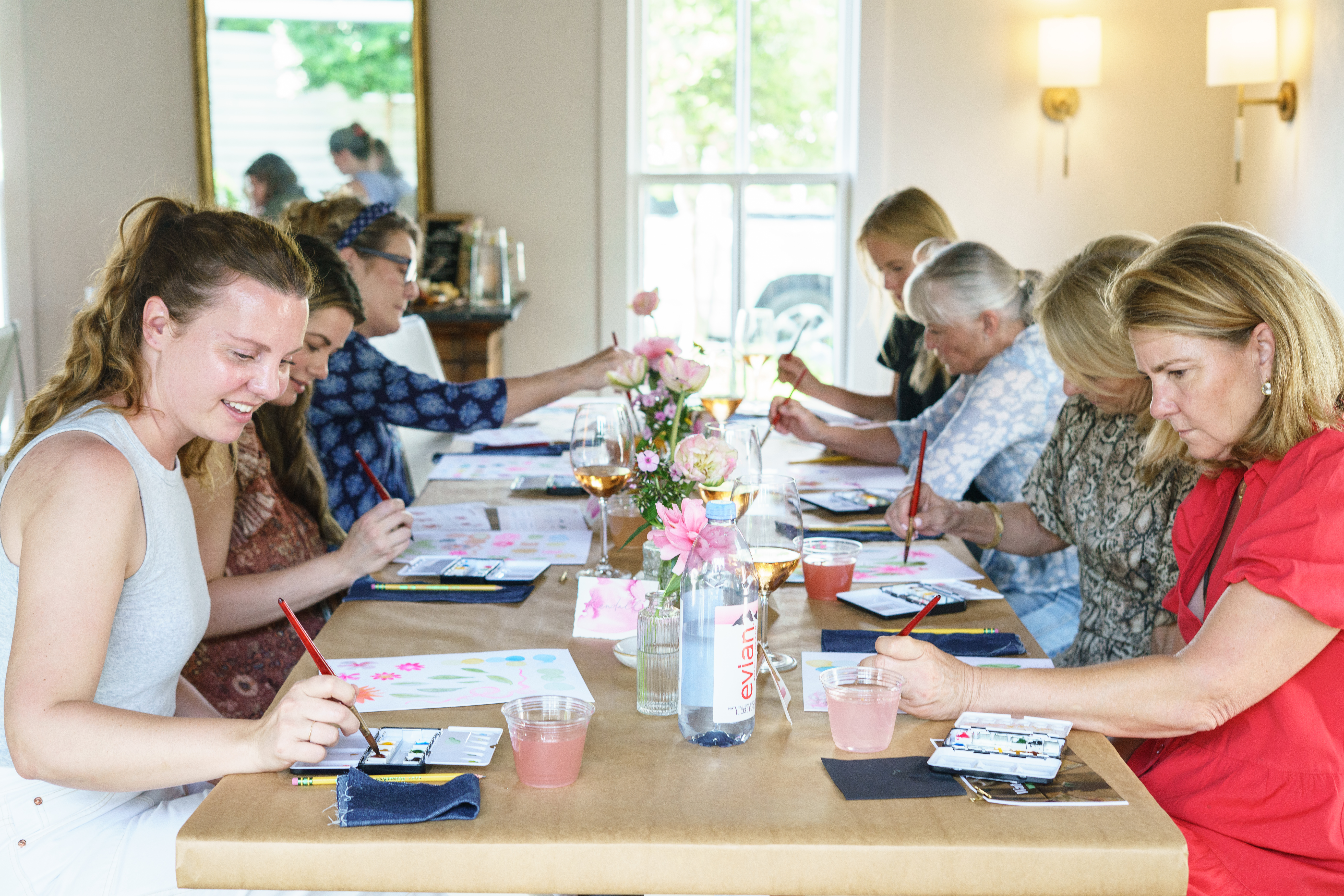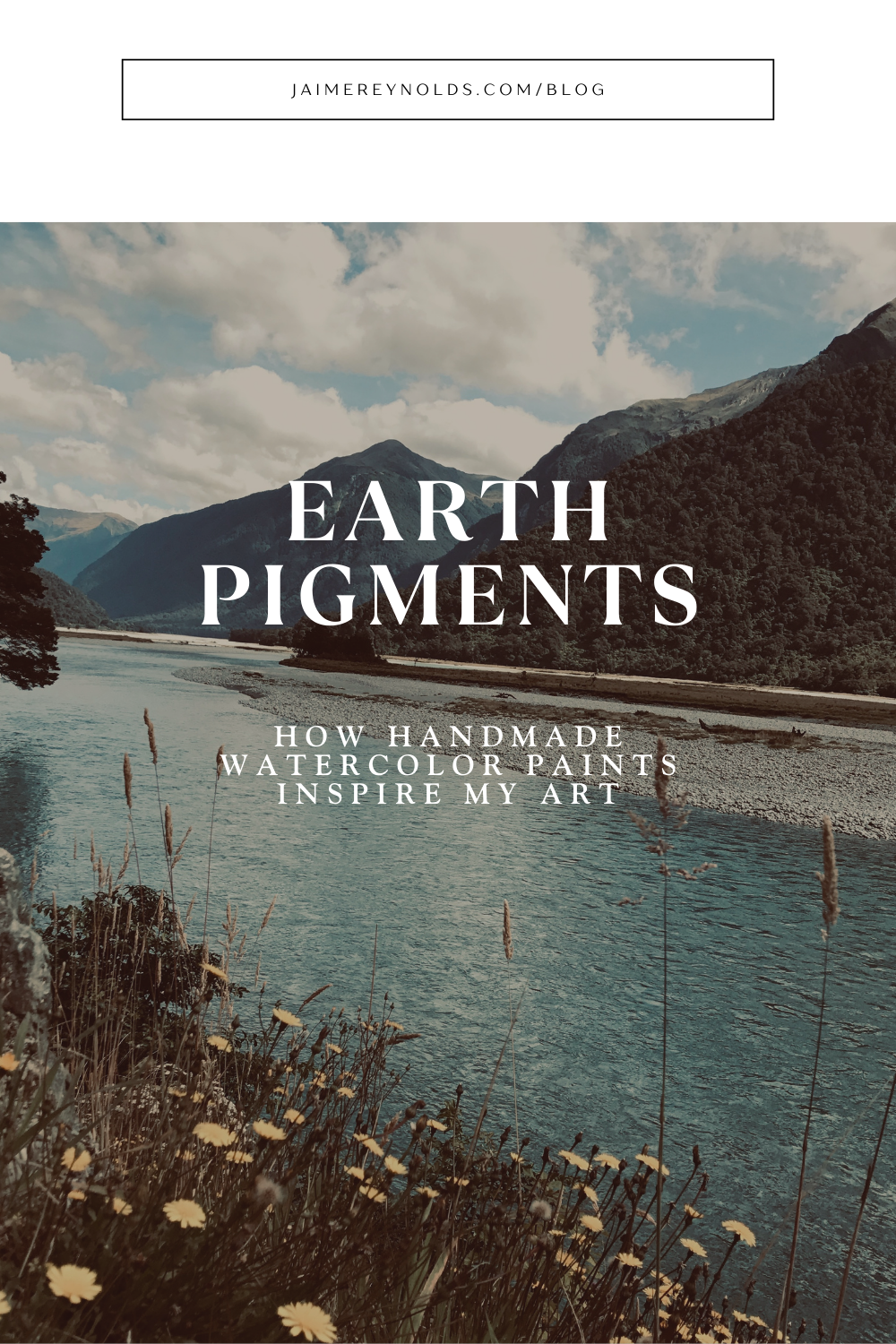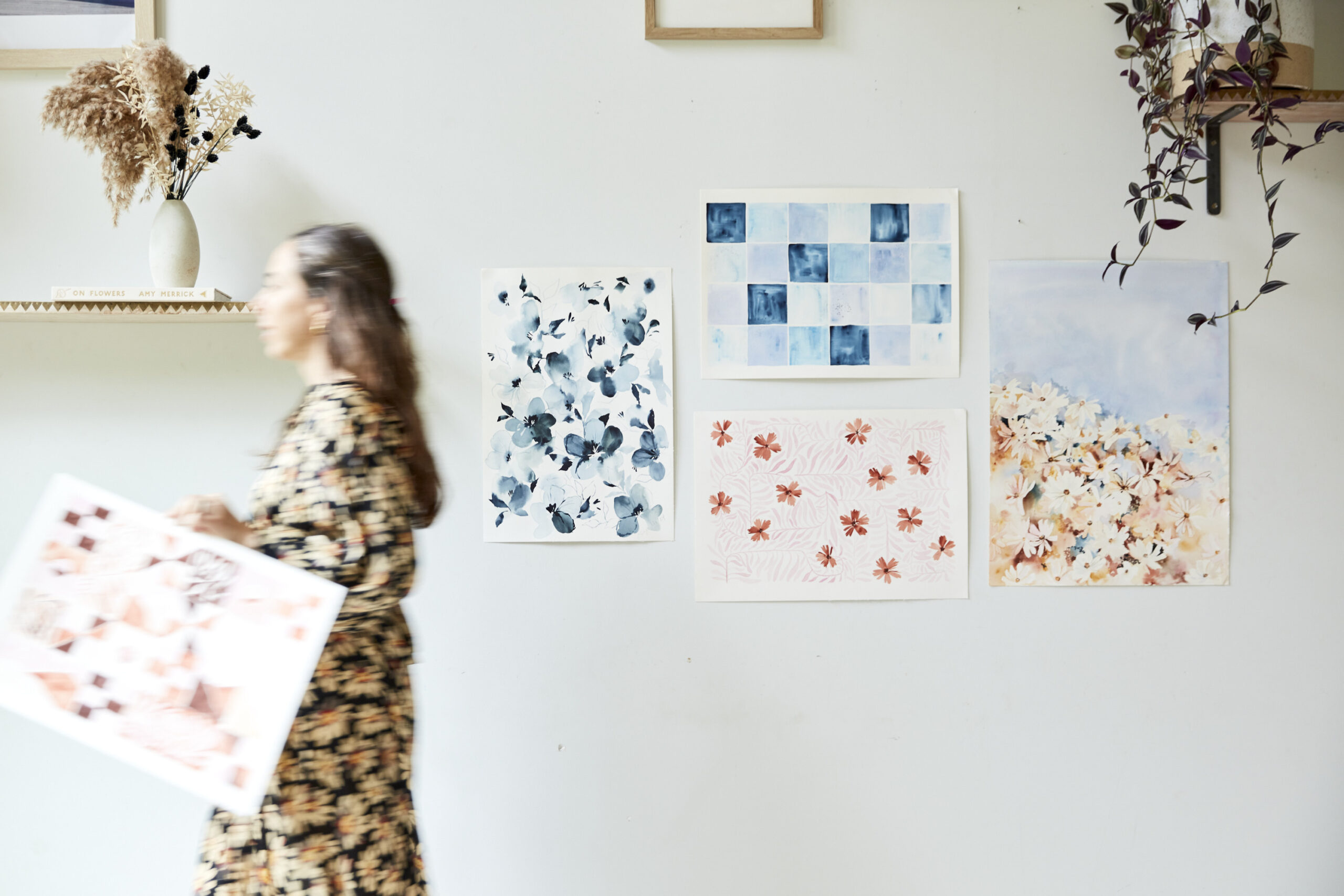The Permanence of Lightfast Watercolors
Painting with watercolors is something that can be truly satisfying and nourishing for the mind and the body. Through painting, a person can boost their creativity, and gain confidence in their technical skill. If you are interested in selling your artwork or having it last for years and years to come, you need to understand what Lightfast watercolors are and when to use them.
Did you know some paints fade over time?
Watercolors are made from synthetic pigment or earth/botanical material (the color) and a binder. Because of the varying properties of each color, some are less permanent then the others. Colors that fade over time are called fugitive colors. When starting out I never really paid attention to this, especially because it would come in a kit and didn’t seem like it was called out. Not until I decided to put some artwork up online, did I start to pay attention to if a color was lightfast or fugitive.
Lightfast Watercolors
Lightfast watercolors or lightfastness means how art materials’ colors stand up to light. It measures if a color can avoid fading or changing under normal conditions. Any sunlight or UV light counts. Showing lightfastness can be hard because it takes time to see how color reacts to light and then fades. Some low-quality colors fade fast, in weeks. Other can last up to a year. Both light exposure time and light power impact the speed of fading.
Lightfast watercolor vs. fugitive
Personally, once I decided to sell my artwork I switched all of my half pans over to lightfast pigments only since they will last decades while fugitive colors will change or vanish when exposed to sunlight. Even if I am sketching or creating something I am going to scan digitally like a print or patter I still use lightfast pigments. I never know when something is going to come out that I am going to want to keep for reference or give as a gift. For that reason I decided to make the switch. I LOVE using handmade watercolors and watercolor inks – both mediums that can be finicky when exposed to light over long periods of time. But thankfully there are stable options for both that I’ll get into soon!
Typically, artists who use fugitive watercolors and watercolor inks often scan in and re-produce their artwork digitally either to sell prints, patterns or illustrations for editorial work. instead of for artwork that they intend to sell and
How to test a paint to see if you own a lightfast watercolor
The manufacturer should be able to tell you if a watercolor paint is fugitive of lightfast but if you want to do your own experiment (or if you make your own paints) try this. Paint a swatch of the color in question. I like to paint a swatch that goes from the colors darkest value to lightest. Under the swatch write the color name, manufacturer and date. Then tape the swatch to a window (from the inside facing out) that gets full sun. Set a reminder for three months out to check on you pigment. If the color hasn’t faded at all it should be stable to use. Keep for an additional three months if you want to use the pigment in artwork to sell.
In general, artwork should never be placed on a wall in direct sun even when behind UV protective glass. But in addition to that we should all be selling artwork that only uses lightfast watercolors. Better to know now than learn the hard way. One very successful artist I studied with told me that when she was just starting out, she sold paintings with fugitive colors and here collectors were not happy. She had to go back in and repaint the area that faded – yikes!
What to Look for When Buying Watercolor Paints
A color’s lightfast rating, created by the American Society for Testing and Materials (ASTM), stands for its lastingness and chemical steadiness against the environment.
Most manufacturers have their method of indicating the level of fugitive properties for each color in their paints. This is commonly referred to as permanence or lightfastness. To truly determine the fugitive properties of paint, it is best to reference the paint’s label, your paint maker’s website or ask them. Mass-produced professional-grade paints that come in tubes often have a rating system on their label.
These are the universal ratings:
I = Excellent
ll = Good
lll = Poor
lV = Fugitive
The Most Notorious Fugitive Watercolors
The most notorious fugitive colors are reds, pinks and neons. Certain favorite colors fade fast including opera, alizarin crimson, anything labelled madder, or even gamboge. Opera Rose is a vivid magenta rose color that is notoriously fugitive. Alizarin Crimson is a vivid red color with a blue undertone that is also very fugitive. For this reason manufacturers started making Quinacridone Red or Rose which is a lightfast alternative to Alizarin Crimson.
Manufacturers like Windsor and Newton will sometime add terms like “new” or “permanent” on color labels to easily communicate that these are lightfast pigments. No matter how much you like a color, if it fades quickly and you’re aiming for a long-lasting artwork, it’s best to look into other options like Acrylic Ink or Hydrus Ink.

A Quick Guide to Watercolor Inks
Looking for watercolor paint can seem tough and puzzling. These are the most important aspects to consider, including if a watercolor is lightfast or fugitive.
1.1 Quality
1.2 Pigment
1.3 Form
Quality
Watercolor paints are available in two distinct quality levels: student grade and artist/professional grade. Generally, the artist’s grade is more acclaimed, resulting from watercolor paint’s combination of ground pigments and binders. For high-quality paint, manufacturers use more pure pigments. In contrast, student grades comprise a smaller pigment percentage to keep costs low.
Pigment
The key component of watercolor paint is pigment. These usually have a letter and a number label. Single-pigment paints are often favored over multi-pigmented ones.
Form
Watercolors come in different forms. The most common and available ones are tubes, half-pans, and Watercolor Inks.
Tips for Preserving Your Watercolor Art
Halting the natural process of watercolor aging, even lightfast watercolors, is almost impossible. However, it is possible to minimize and slow their deterioration. Here is how to do so:
- Avoid direct sunlight to protect watercolor paintings from color fading. Hang them on a wall adjacent to a window and away from direct sunlight.
- Use UV-filtering glass. Using this protective layer will protect the color from the sun’s harmful rays.
- Another great way to make the piece last longer is to control the environmental conditions such as temperature and humidity. Maintaining stable temperature and humidity in the display area will prolong the longevity of the fugitive colors.
- Best practice is to use lightfast colors when producing artwork to sell.
If you’d like to learn more about how to use watercolors and all the details on watercolor supplies grab the Ultimate Watercolor Supply Freebie here!

Interested in learning more about lightfast watercolors and reading watercolor paint tubes from Windsor & Newton check out their youtube





